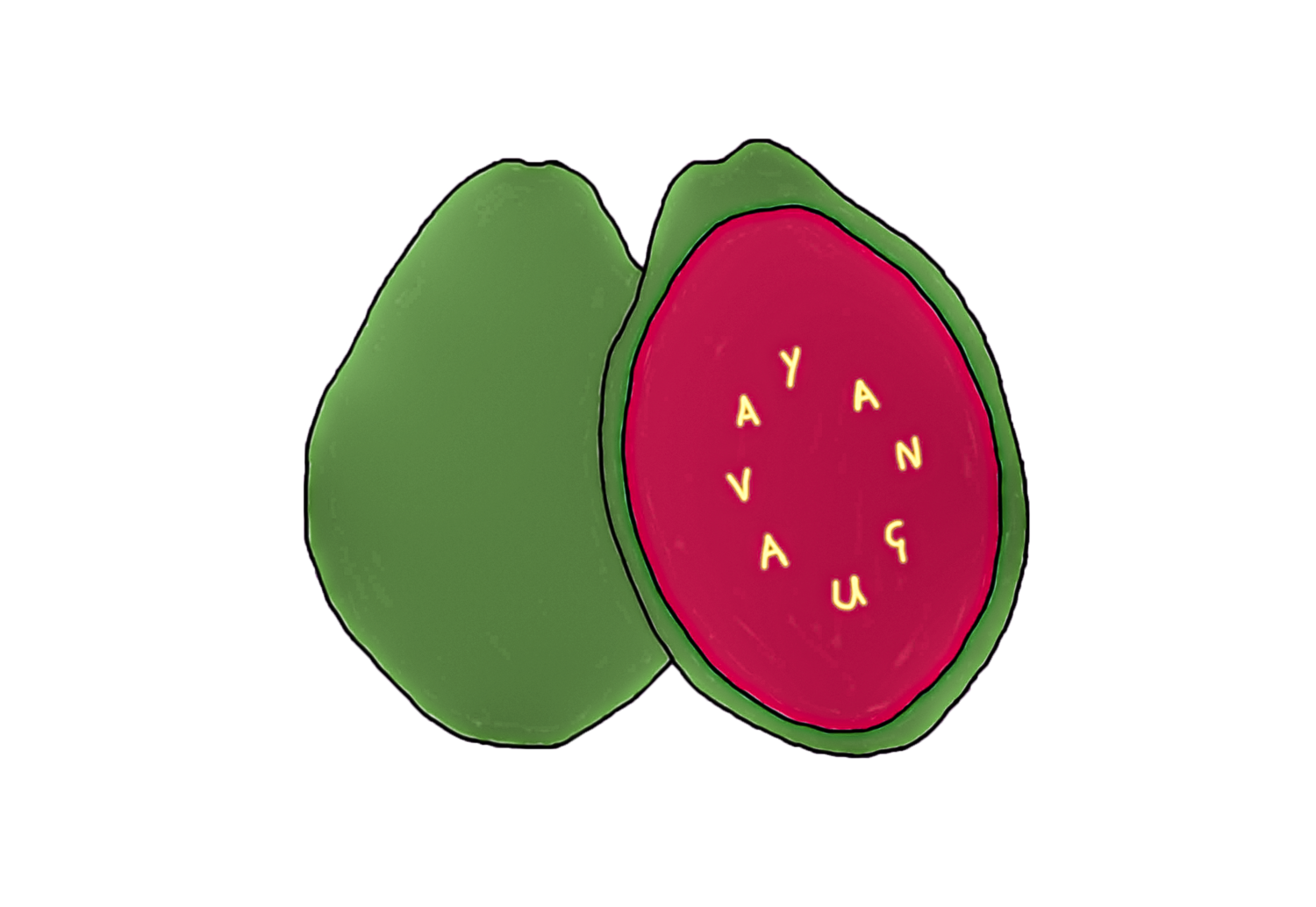Camouflage
It’s a simple painting, one with block colours, spiral square patterns and a blue character running in orange space. When I created this piece, the initial sketch for this painting was done without too much thought put into it. In other words, it’s surreal: just get a drawing down onto paper and analyse what’s going on in your subconscious afterwards. It’s a fun and rather interesting way of exploring the workings of the mind, and after doing a bit of delving, I found I could see what my subconscious was trying to communicate to me through imagery.
The blue figure has two faces (and no, it’s not a metaphor for bitchiness, although please do feel free to interpret this piece how you wish!). The face on the left is smiling, putting on a happy persona for all outsiders to see. But if you look closely, there are lines of tiredness underneath its eyes, and the face opposite has a look of sadness and anxiety. The blue figure is running, and since it is heading in the direction to which the happy face points, it seems it is trying desperately to avoid confronting the sad face.
The painting is an exploration of mental illness and how people have the capacity to hide difficult feelings, to be in denial of blueness in front of others. I think our society is one that puts immense pressure on people to be flawless, to be happy all the time, to showcase their success to others. It can sometimes seem as if there’s no room for letting out our anxieties without fear of judgment. We are taught to disregard what we label as negative feelings because they appear to reveal weakness. We are taught to push away unpleasantness without ever properly coming to terms with it.
So, when we run and hide from ourselves and force our outer appearance to be something it is not, often it means issues don’t get resolved and we don’t receive the help or comfort we might need. It means we don’t accept that happiness and sadness are in a state of flux, and that both feelings are okay. Perhaps that’s what my subconscious was trying to tell me when I first sketched out the blue figure as it’s certainly taken me a long time to understand this.
In fact, the first sketch was drawn a couple of years before I received my autism diagnosis. It was when I was painting it, perhaps a few months after finding out that I am on the spectrum, that I could look at the imagery and further interpret the two faces as a form of behaviour known as 'camouflaging'. Camouflaging is when an autistic person, despite not always fully understanding social cues and conventions, is able to learn basic social skills, to come across as 'normal'. Many autistic women are often diagnosed later in life, if they are even diagnosed at all, because camouflaging acts as a great disguise. And it certainly has its benefits—it means I can fit in a bit better than I used to be able to when I was a small child (I used to find it so difficult to know what to say to people!). It may sound fake—to camouflage—but many autistic women have to adopt this skill in order to avoid being hurt, or hurting others. We must learn how to survive in a neurotypical society.
But with it also comes its disadvantages. It means that, just like the character in my painting, behind the smiles, the laughter, the apparent happy attitude, lies uncertainty, worry and social anxiety. Things get baffling, lonely; we grow tired of having to keep up with everything. Yet the painting reminds me that, as mentioned earlier, it is sometimes hard for all of us—whether you’re neurotypical or autistic. It’s something we all have in common, and something that therefore doesn’t need to be hidden behind the scenes. It’s okay to tell people how you’re truly feeling.



